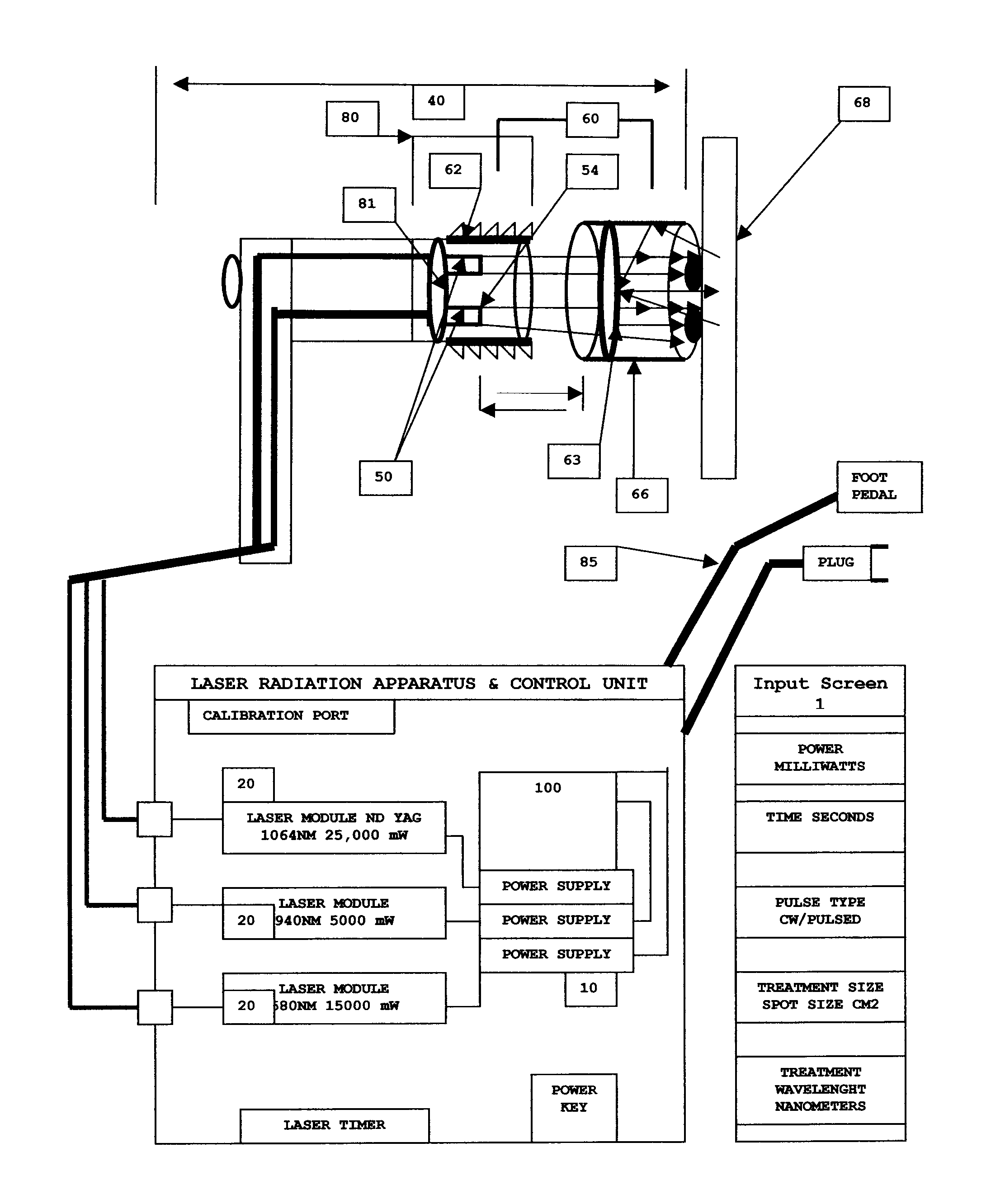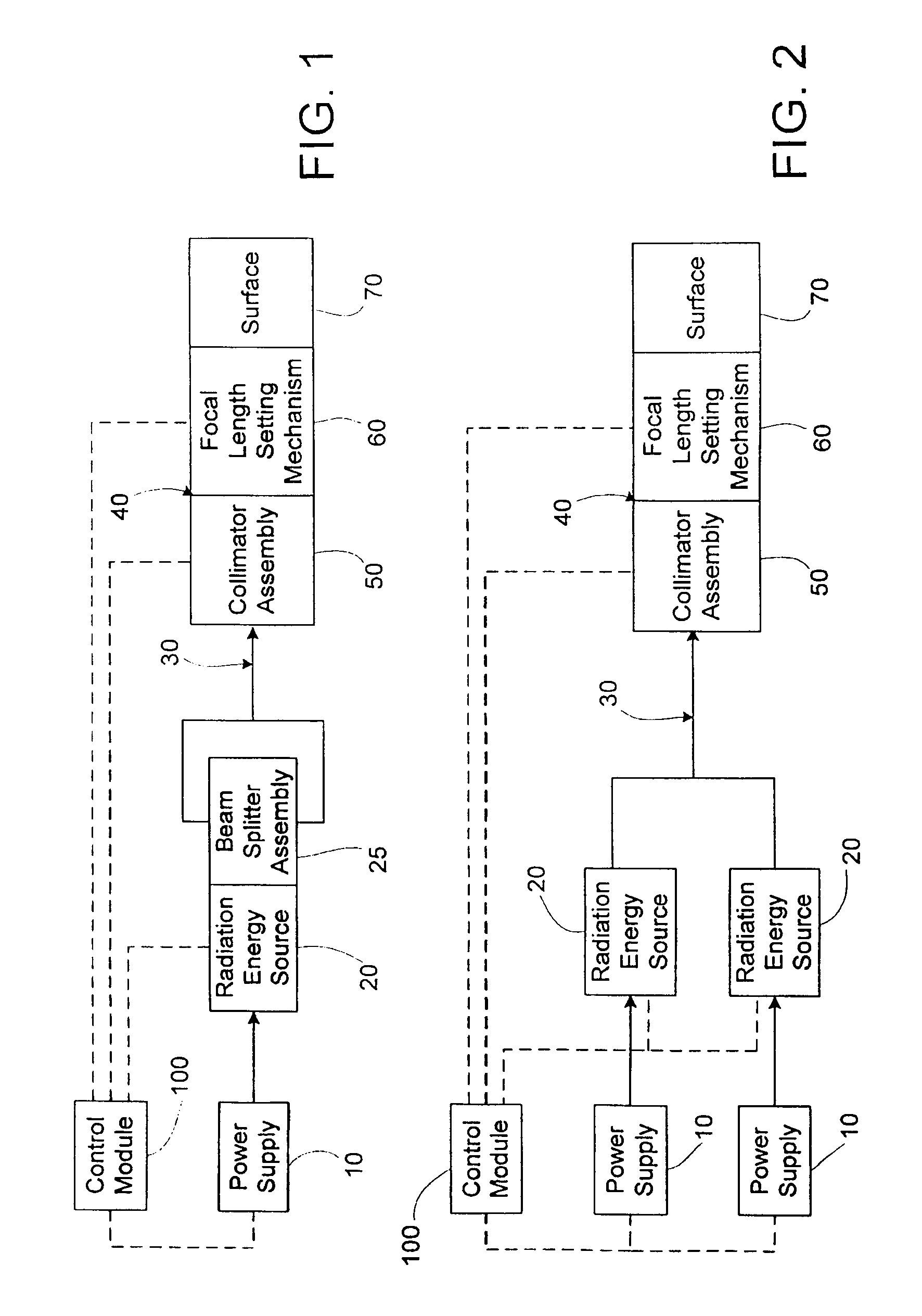Apparatus and method for performing radiation energy treatments
a radiation energy treatment and apparatus technology, applied in the field of apparatus and method for performing radiation energy treatment, can solve the problems of varying the angle between the discharge end of such wand-like devices and the surface exposed, the most difficult to accurately control, and the area exposed to laser energy
- Summary
- Abstract
- Description
- Claims
- Application Information
AI Technical Summary
Benefits of technology
Problems solved by technology
Method used
Image
Examples
Embodiment Construction
[0054]As shown throughout the Figures, the present invention is directed to an apparatus and method for performing a plurality of radiation energy treatment, including at least photo-stimulation, biostimulation, photocollagen stimulation, and / or photobiostimulation, on biological tissue. The apparatus provides complete control of the energy density, area of treatment or “spot size”, and allows the utilization of specific wavelengths alone or in combination, either coincidentally or adjacently, as required for optimal penetration and absorption characteristics to selectively treat a specific tissue type and obtain the most beneficial results. As shown in FIG. 1, the laser treatment apparatus includes a power supply, which is shown schematically as 10, for at least one radiation energy source, shown schematically as 20, wherein the radiation energy output by the radiation energy source 20 is received by a transmission assembly, generally shown as 30, which transmits the radiation ener...
PUM
 Login to View More
Login to View More Abstract
Description
Claims
Application Information
 Login to View More
Login to View More - R&D
- Intellectual Property
- Life Sciences
- Materials
- Tech Scout
- Unparalleled Data Quality
- Higher Quality Content
- 60% Fewer Hallucinations
Browse by: Latest US Patents, China's latest patents, Technical Efficacy Thesaurus, Application Domain, Technology Topic, Popular Technical Reports.
© 2025 PatSnap. All rights reserved.Legal|Privacy policy|Modern Slavery Act Transparency Statement|Sitemap|About US| Contact US: help@patsnap.com



